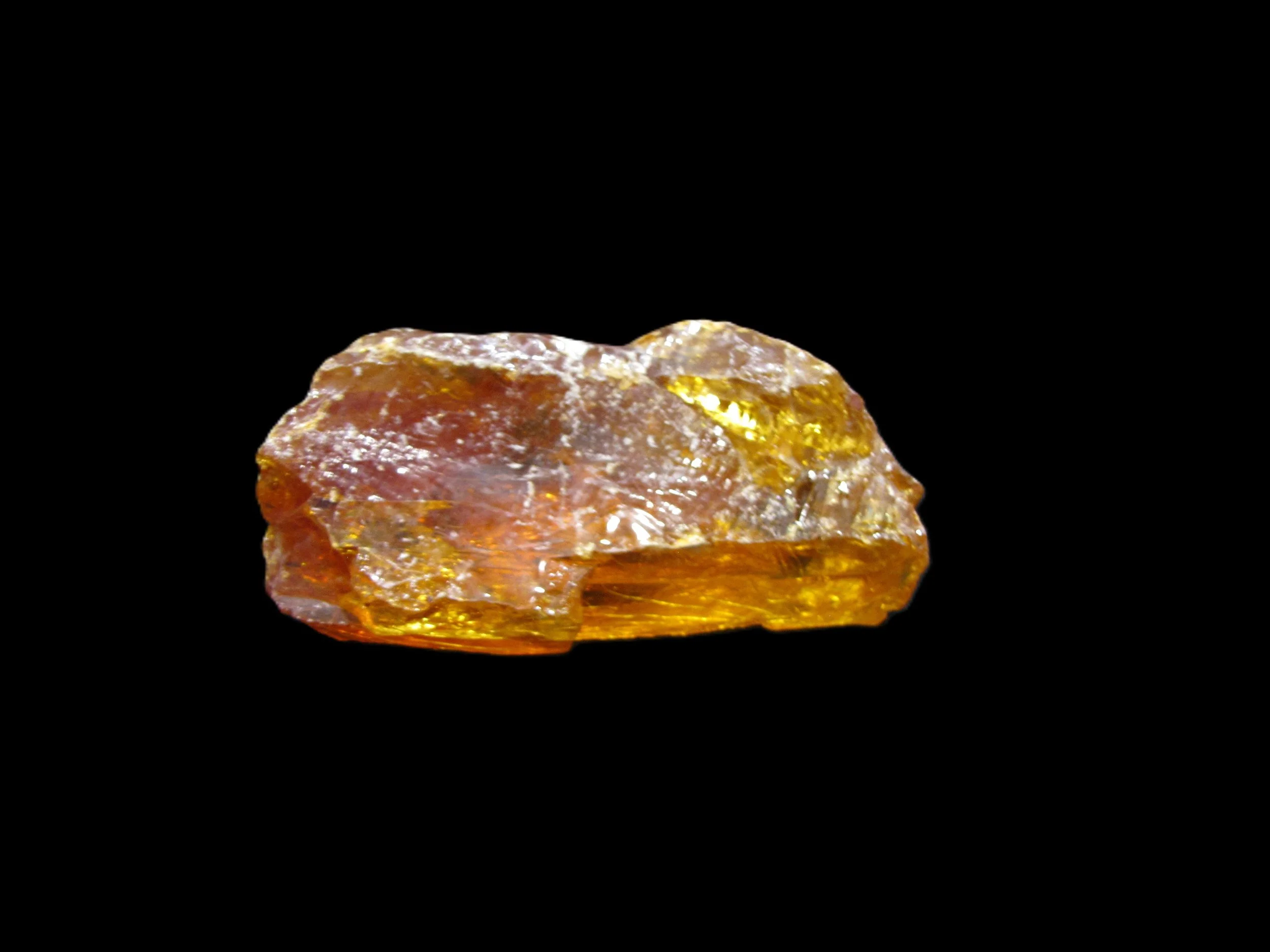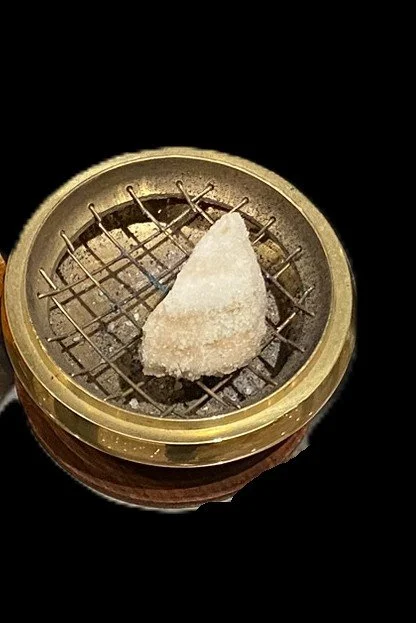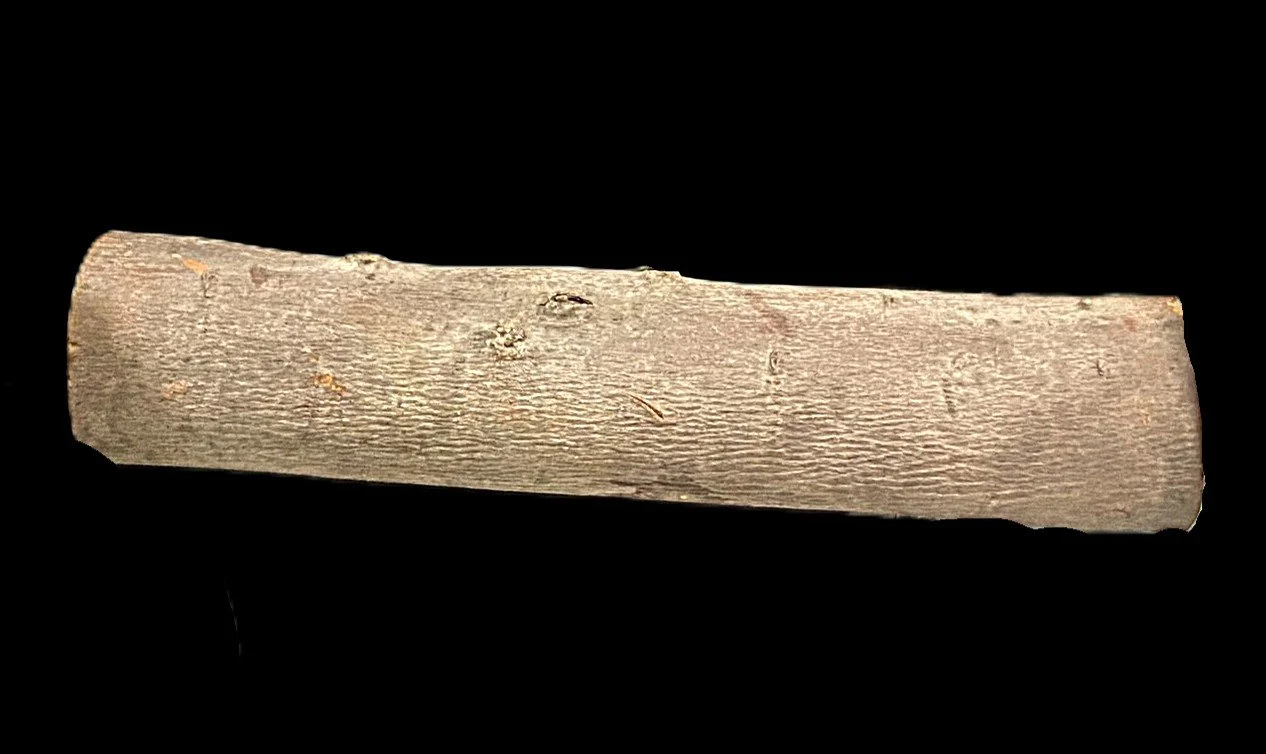Piece of Frankincense
Frankincense is a fragrant gum resin exuded in large, light yellowish-brown tears from the Boswellia trees (Boswellia Carterii, Boswellia Papyifera, Boswellia Thurifera) Which grow in South Arabia, Ethiopia, Somaliland, and India. Frankincense was imported into Judah by camel caravan from Sheba (Isaiah 60:6; Jeremiah 6:20), A trade connection originating with the queen of Sheba’s visit to Jerusalem during the reign of Solomon (1 Kings 10:10; 2 Chronicles 9:9). Frankincense could be used for secular purposes as perfume (Song of Solomon 3:6; 4:6; 14), But it appears most frequently in the Bible in a religious context. Exodus 30:34-38 contains the recipe for a frankincense-based incense dedicated for use by the priests. No other incense was permitted on the altar (Exodus 30:9) And secular use of the sacred recipe was absolutely forbidden (Exodus 30:38). Offerings of frankincense were made at the temple (Isaiah 43:23, 66:3; Jeremiah 17:26; 41:5) Where it was stored for later use (Nehemiah 13:5, 9; I Chronicles 9:29). Frankincense was set beside the Bread of Presence (Leviticus 24:7) and accompanied cereal offerings (Leviticus 2:1-2, 14-16; 6:14-18). It was prohibited with the sin offering (Leviticus 5:11 or a cereal offering of jealousy (Numbers 5:15). Frankincense was among the gifts offered to the infant Jesus by the wise men (Matthew 2:11. Revelation 18:13 lists frankincense as part of the cargo of the merchants who weep for the fallen city.
Myrrh is an aromatic gum that grows in Arabia, Abyssinia, and India. Highly prized from the earliest times (Genesis 37:25), it was used in incense (Exodus 30:23) and as a perfume for garments (Psalms 45:9), or for a lover’s couch (Proverbs 7:17). It was part of the cosmetic treatment used to purify young girls for the King's bed (Esther 2:13), and it was also used in embalming (Mark 15:23; John 19:39). Myrrh Appears among the items of luxury flowing into Babylon (Rome) as it meets its doom (Revelation 18:13). Along with gold and frankincense it exemplifies the rich gifts brought to the infant Christ by the Magi from the East (Matthew 2:11).
Type: Oil Lamp
Age: 400 CE
Era: Byzantine
Culture: Byzantine Christian
Excavated: Unknown
This is a Byzantine Lamp of a female figure with a cross on the bottom. Look under the lamp.
Replica of an ancient Book of Thomas
Local manuscripts, with a few minor exceptions (such as verses written on amulets and pots), are written on one of three materials: papyrus, parchment, or paper. Each had advantages and disadvantages. Parchment (treated animal skin) was by far the most durable, but also the most expensive. It was also difficult to get large numbers of sheets of the same size and color. Papyrus was much cheaper but wore out more quickly. Since it is destroyed by dampness, few copies survive to the present day, except from Egypt (and even those are usually badly damaged). Paper did not become available until relatively recently and while it was cheaper than parchment, once paper mills were established, the mills had high overhead costs, thus making access to paper limited. Paper was by number means as cheap in the late manuscript era as today (where paper is made from wood pulp rather than rags).
This book is an exact replica of the book of Thomas (an early gnostic writing, falsely attributed to the disciple of Jesus) used by The History Channel. It is interesting how documentaries about Jesus often cite the Gospel of Thomas as a new and exciting find that provides long lost information about Jesus. But, has it been long lost? These programs seem to neglect to mention that the early Church Fathers were well aware of the Gospel of Thomas. The Church Historian Eusebius (260-340), who wrote in the 300’s AD clearly stated that
“…we have felt compelled to give this catalogue in order that we might be able to know both these works and those that are cited by the heretics under the name of the apostles, including, for instance, such books as the Gospels of Peter, of Thomas, of Matthias, or of any others which no one belonging to the succession of ecclesiastical writers has deemed worthy of mention in his writings.”
The papyrus strips come from the papyrus plant found in the swamps along the Nile river. From papyrus, we get the word “paper”. The pith (inside part) of the plant was cut into strips and laid in horizontal and vertical layers, allowing the natural sugars of the plant to bond the strips together. Papyrus was used for writing from the earliest periods. According to Herodotus (484-430 BC), papyrus was such a common material, he could not think of a civilized people using anything else. The full completed sheet was made by Pastor Terry in Egypt (2005).
Type: Signet Rings (also known as seals)
Era: Crusader
1000 -1200 AD
Signet rings, also known as seals, come from the Hebrew word “hotam” and the Greek word “sphragis”, and reused universally in the ancient world much like we use signatures today. They would be used to seal, or stamp, documents, doors, tombs, etc. They were also emblems of authority. These rings come from the crusader era. Daniel 6:17 “Then Stone was brought and laid on the mouth of the den, and the king sealed it with his own signet ring and with the signets of his Lords, that the purpose concerning Daniel might not be changed.”
Type: Lead Seals
Date: 1095-1291 AD
Era: Crusader
These are lead seals found by metal detectorists in Israel. Most come from the crusader time period.
Phylactery and bag obtained from Israeli Soldier
The Tefillin (translated ‘phylacteries’) consist of two small black boxes containing small scrolls of parchment upon which are written four Biblical Verses:
Exodus 13:1-10; 11-16; Deuteronomy 6:4-9; 11:13-21. These include the commandment to wear the tefillin as a sign of faith and devotion. Each of the black boxes comes with leather straps so they can be bound upon the hand or work above the forehead. They are written on parchment scrolls in a particular Hebrew script (Ashuri) by a scribe using special ink. The passages contain 3, 188 letters and take 10-15 hours to complete. The tradition of wearing phylacteries probably comes from a misinterpretation of Deuteronomy 6:8, “You shall bind [these commandments] as a sign on your hand, and they shall be as frontlets between your eyes,” which refers to having the commandments in our thoughts and guiding our actions. Jesus referred to these when He said of the Pharisees, “But all their works they do to be seen by men. They make their phylacteries broad and enlarge the borders of their garments.” (Matthew 23:5).
The pouch containing a tefillin was carried by an Israeli soldier.
This is an Olive Wood branch from Bethlehem.
Block of salt from the Dead Sea in Israel. The Dead Sea is the lowest point on earth (417 meters below sea level). Because the quantity of water evaporation far exceeds that which flows into it, the Dead Sea has the highest concentration of salt in the world (340 grams per liter of water). It is called the Dead Sea because its salinity prevents the existence of any life forms in the lake. That same salt, on the other hand, provides tremendous relief to the many ailing visitors who come regularly to benefit from its healing properties. This block is taken directly from the shore of the Dead Sea.
Replica of the 1619 King James Bible. The first edition of the KJV appeared in 1611. The King James version remains one of the greatest landmarks in the English language. Although produced in England for English churches, it played a unique role in the historical development of the United States of America. Even today, many consider the King James Bible the ultimate English translation.










